
In order to apply for any of the following theses or internships, the candidate must have no more than 3 exams left.

Deep space navigation (tracking spacecraft beyond the lunar orbit) faces major challenges due to the absence of GNSS coverage and the limited availability of ground stations. Current systems, such as NASA’s Deep Space Network (DSN) and ESA’s ESTRACK, employ Very Long Baseline Interferometry (VLBI) for angular positioning. While effective, terrestrial VLBI is constrained by limited baselines, atmospheric distortions requiring calibration, and reduced target visibility caused by Earth’s rotation. To address these limitations, a novel approach based on space-based interferometry has been proposed. In this concept, signals from interplanetary spacecraft are received and cross-correlated by a constellation of Geostationary Earth Orbit (GEO) satellites. This configuration extends baselines, eliminates atmospheric phase errors, and provides near-continuous visibility, but demands extremely accurate orbit determination (OD) of the GEO platforms.
Activities:
Conduct a literature review on VLBI methods for deep space navigation.
Develop a simulation environment for GEO orbit determination using JPL’s MONTE toolkit.
Quantify achievable OD accuracies under different tracking configurations, including GNSS measurements, Doppler and range data from Earth stations, and hybrid duty-cycle scenarios.
This thesis combines advanced OD simulation, estimation theory, and mission design, contributing to future autonomous deep space navigation concepts.
Topic: Deep Space Navigation
Tutor: Riccardo Lasagni Manghi
Uploaded: 17/09/2025
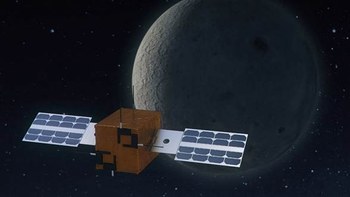
The European Space Agency’s LUMIO (Lunar Meteoroid Impact Observer) mission will characterize the meteoroid environment around Earth and the Moon by monitoring impact flashes on the lunar far side. Operating for one year in a quasi-periodic Halo orbit around the Earth-Moon L2 point, LUMIO will continuously observe the lunar far side while maintaining Earth visibility for data downlink. Its science payload, the high-frequency VIS-NIR LUMIO-Cam, not only enables meteoroid impact detection but also opens the door to innovative orbit determination (OD) techniques. In particular, timing stellar occultations during science operations can complement ground-based radiometric tracking, improving spacecraft navigation accuracy, absolute localization of impact sites, and reducing dependence on ground stations.
Activities:
Gain proficiency in Python and familiarize with JPL’s orbit determination toolkit MONTE.
Develop an OD setup including simulated meteoroid impact flashes.
Perform a covariance analysis to quantify how stellar occultation measurements improve impact site localization accuracy.
Investigate the effect of star-matching on LUMIO’s attitude reconstruction and its related impact on impact site positioning.
This thesis combines spacecraft navigation, astrodynamics, and mission operations, offering practical experience in applying advanced OD methods to a pioneering lunar science mission.
Topic: Astrodynamics / Navigation / Mission Operations
Tutor: Riccardo Lasagni Manghi
Uploaded: 17/09/2025
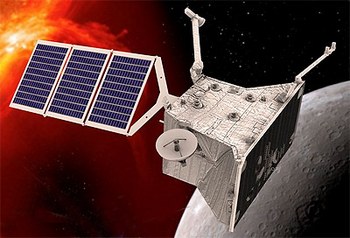
The ESA/JAXA mission BepiColombo, currently en-route to its final orbit around Mercury, offers a unique opportunity to study the complex dynamics affecting a spacecraft in close proximity to the Sun. One of the dominant non-gravitational perturbations influencing the spacecraft’s orbit is the Solar Radiation Pressure (SRP), which results from the momentum transfer of solar photons impacting the spacecraft’s surface. Due to the proximity to the Sun, SRP plays a significant role in the long-term trajectory prediction and orbit determination processes. To achieve the high-precision orbit determination necessary for BepiColombo’s scientific goals, an accurate model of SRP must be developed. This model must account not only for the direct solar radiation, but also for the reflective contributions from Mercury’s surface, including albedo and thermal re-radiation effects. These additional components become increasingly relevant during the orbital phase due to the planet's proximity and the irregularities of its surface reflectivity and temperature distribution. The aim of this thesis is to implement a comprehensive model of the forces acting on the spacecraft due to solar radiation, including both direct and indirect (reflected and re-emitted) components. The model will be developed for the particular case of the BepiColombo's Mercury Planetary Orbiter (MPO), and will take into account the spacecraft geometry, attitude, and surface optical properties. This work will support improvements in orbit determination accuracy and contribute to the refinement of planetary gravity field estimations and geophysical investigations.
Topic: Orbit Determination / Modeling
Tutor: David Bernacchia
Uploaded: 27/05/2025
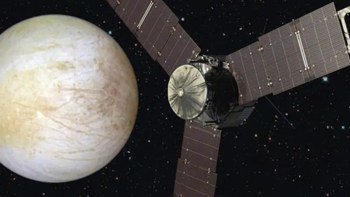
Radio occultation is a powerful technique for studying the ionospheres of planets and moons, typically yielding key information such as electron density profiles. Existing analysis methods predominantly rely on the Abel inversion. This thesis proposal aims to develop a new methodology based on a least-squares approach, which offers greater flexibility if compared to traditional methods.
The least-squares approach enables the simultaneous fitting of the radio signal's phase data to a parameterized ionospheric model, allowing for the inclusion of additional constraints and prior knowledge about the system. Also, it allows for a rapid estimation of the uncertainties associated with the derived electron density profiles compared to time-consuming approaches such as Monte Carlo analyses.
The proposed methodology will be applied to the analysis of radio occultation data from NASA's Juno spacecraft, focusing on the ionospheres of the Galilean moons (Europa and Ganymede). By deriving high-fidelity electron density profiles, this work will contribute to a better understanding of the complex ionospheric environments of these moons, as well as their interactions with Jupiter's magnetosphere.
Topic: Radio Occultations / Numerical Computation
Tutor: Andrea Caruso
Uploaded: 25/02/2025
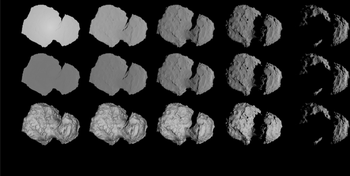
Optical navigation encompasses most if not all deep space missions, either as a navigation tool or as a remote sensing technique to assess the surface properties of bodies, and even their interior. From the ESA/JAXA mission BepiColombo to Mercury, to the recently launched ESA spacecraft Juice en route to Europa and other jovian moons, most missions involve the analysis of images of planetary surfaces to extract scientific data. Planning for unvisited planetary regions or bodies with unknown small features requires the simulation of accurate and data-driven topographic features to test optical navigation methods and image processing algorithms. Still, simulating planetary and small bodies surfaces is not trivial, as the interaction of photons with surface materials needs to be appropriately simulated, both at the microscopic and macroscopic scale.
In this context, this master thesis project involves using path-tracing engines to simulate materials and geometries, implementing data-driven procedural geometry generation, custom reflectivity models for different moons, planets, or bodies, and query of spacecraft and camera trajectory and attitude. The candidate will use path-tracing software like Blender and develop automation routines using its Python API. Data from the Planetary Data System (PDS) will be used to validate the simulations, and comparison with real spacecraft images will be performed to assess the effectiveness of rendering and simulation.
Topic: Remote Sensing / Numerical Computation
Tutor: Andrea Togni
Uploaded: 28/01/2025
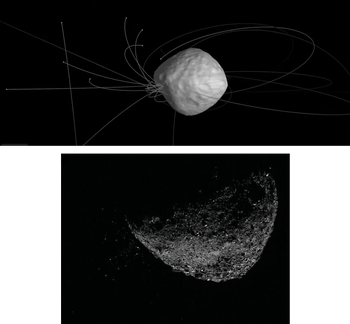
Hera is a European Space Agency space mission, aimed at conducting an in-depth investigation of the Didymos binary asteroid system following the impact of the DART spacecraft (NASA) on Dimorphos. One of Hera's primary objectives is to accurately estimate the mass and mass distribution of both asteroids. This entails determining the gravity field of Didymos and Dimorphos with precision, offering valuable insights into their overall mass and internal distribution.
To assess the expected accuracy in the gravity field of the asteroids, our approach involved tracking and modelling Hera, Juventas and Milani spacecrafts in orbit around the asteroids. This thesis introduces a complementary method to gauge the sensitivity to the asteroids' gravity field, following the approach adopted by OSIRIS-REx at Bennu. This method entails tracking, using spacecraft-based images, and modeling pebble-sized particles that might have been ejected from Dimorphos' surface after the DART impact, establishing sustained orbits, or following natural ejection. The candidate will utilize Python to model these particles and perform orbit determination using the MONTE (NASA-JPL) software.
Moreover, the candidate will conduct parametric analyses to evaluate the sensitivity of the results to key parameters. This involves exploring variations in particle size and number, as well as different observation schedules.
Uploaded: 7 Mar 2024/EG
Code: LM24HERAGD
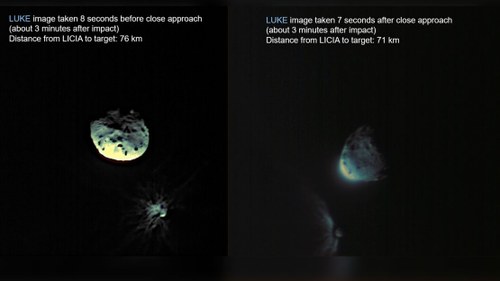
Optical images collected by deep-space probes are often used to estimate the relative position of the spacecraft with respect to their small body targets.
This thesis aims to perform a detailed literature review of currently available image processing and navigation techniques for missions to small bodies, with a specific focus on the LiciaCube mission to the binary asteroid system Didymos.
The candidate will develop a complete pipeline for the most common image processing techniques, leading to the extraction of the target’s center of brightness and limb profile from a given input picture.
The generated observables will be included within JPL’s orbit determination software MONTE and analyzed as part of the LiciaCube flyby reconstruction.
Uploaded: 9 Feb 2024/RLM
Code: LM24ODSNSB
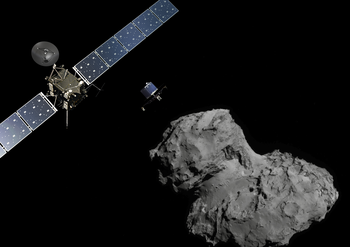
The relative orbit of Rosetta around Comet 67P was reconstructed using the operational solution derived by ESOC’s Flight Dynamics team as part of the navigation process. The operational solution contains several discontinuities caused by the lack of modeling for the comet’s non-gravitational motion, which limits the applicability of such a solution for the ephemeris reconstruction of 67P.
This thesis aims to perform an accurate reconstruction of the relative orbit of Rosetta for specific mission phases, using a combination of Earth-based radiometric measurements (Doppler and range data) and optical images collected by the onboard cameras.
The candidate will develop high-fidelity dynamical and observational models using JPL’s orbit determination software MONTE and process these measurements within an orbit determination filter. The reconstructed orbit will be validated through comparison with the latest solutions found in literature.
Uploaded: 9 Feb 2024/RLM
Code: LM24ROSCCG